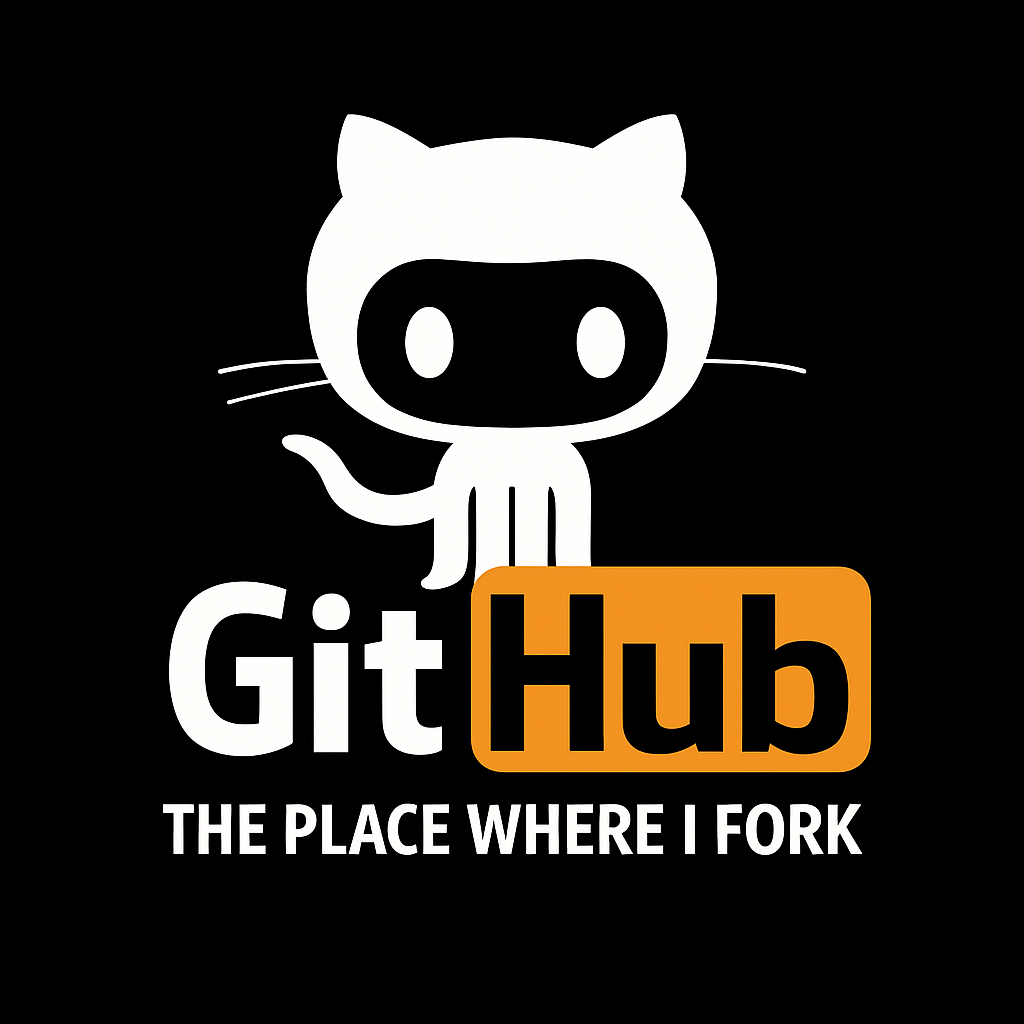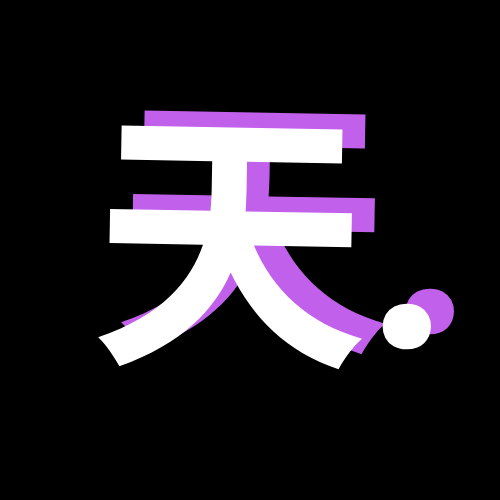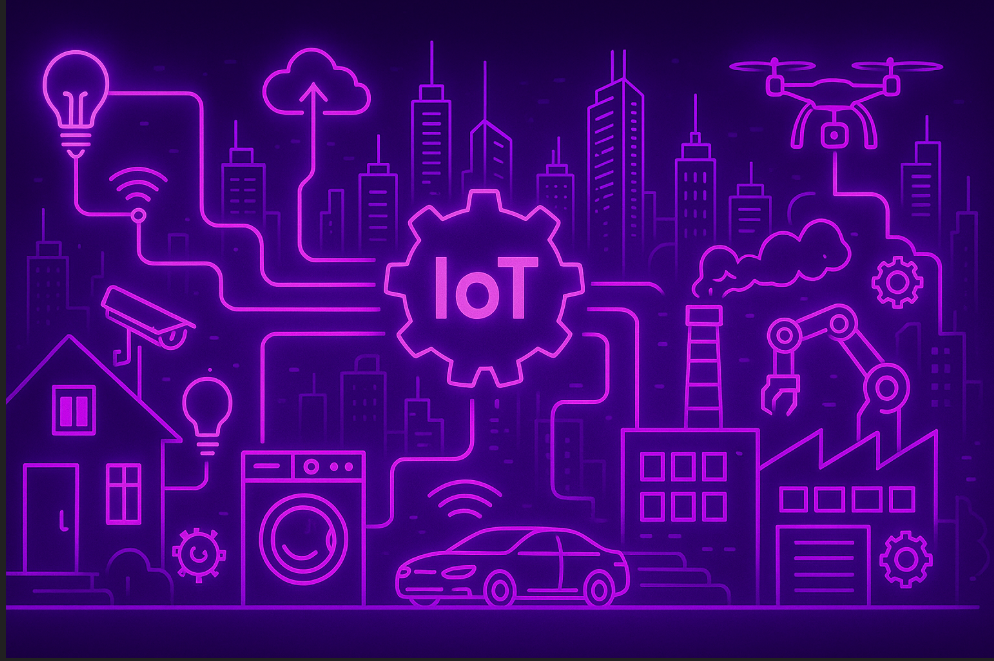
🔧 Tenmei.tech & IoT Innovation:
Engineering the Smart Future
Disclaimer: This article presents a high-level overview of a generalized automation flow architecture designed to optimize data processing and reduce operational friction across industries. All examples are illustrative and do not disclose any specific or proprietary information related to past or current employers, clients, or projects.
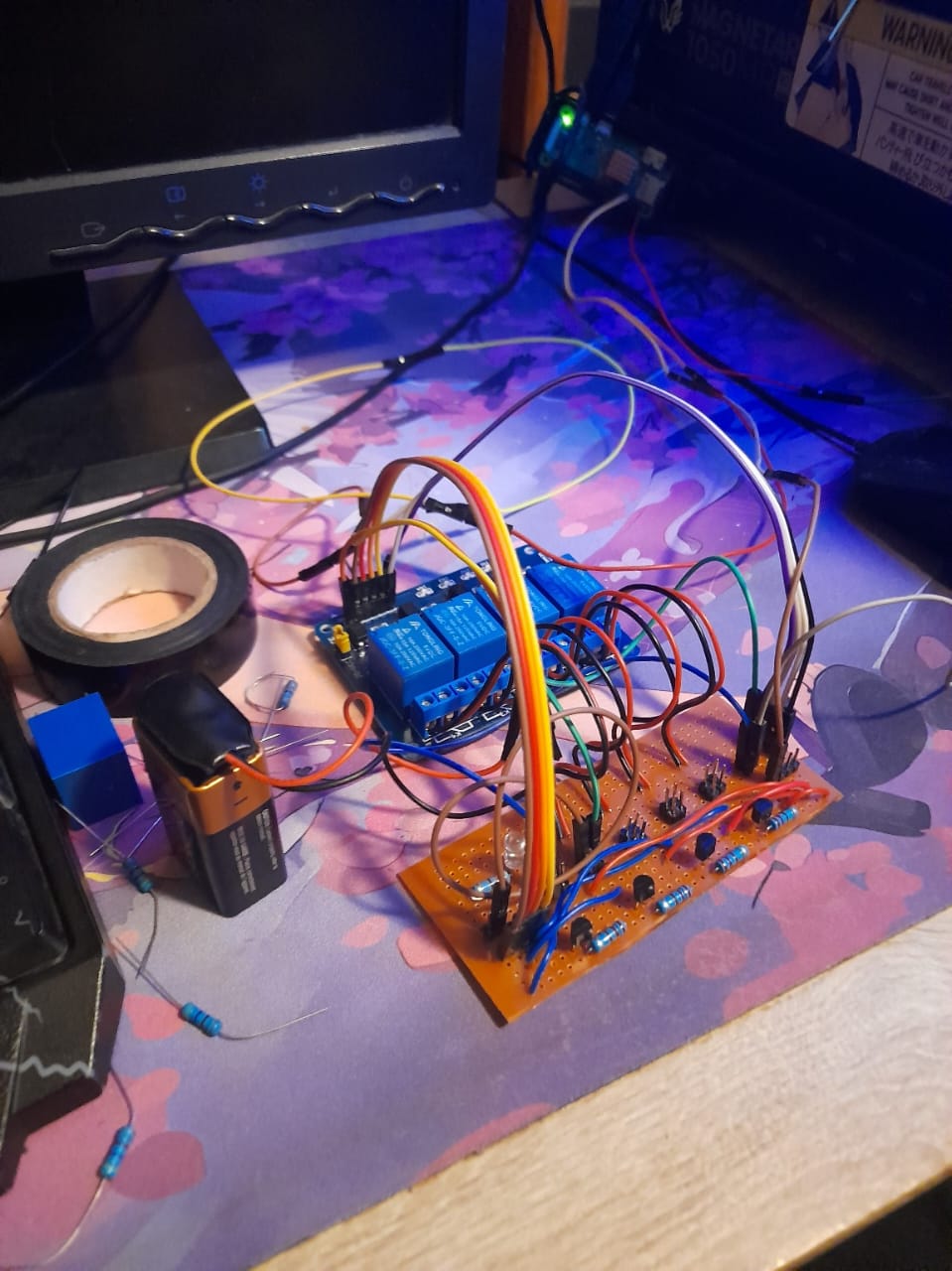
My story with IoT💫
At the heart of Tenmei.tech, my path into the world of IoT (Internet of Things) began with a blend of curiosity, engineering discipline, and a vision for seamless automation. With Mugen Himeryū, my custom high-performance workstation (maybe someday i’ll write a article about her), and a solid background in mechatronics engineering, I entered the realm of IoT development focused on precision, efficiency, and innovation, things that sometimes need a lot of testing and development to work smoothly.
From smart sensors and real-time analytics to fully integrated edge devices, Tenmei has evolved into a dynamic space for testing and implementing advanced IoT solutions. Each project reflects my commitment to high-performance development and scalable systems design.
A github repo showing a small (but very important and critical implementation of IoT technology) developed and tested by Tenmei team.
⚙️ Foundations of Mechatronics Applied to IoT
Mechatronics integrates mechanics, electronics, control theory, and computing, making it a core pillar of effective IoT development. Here’s how these principles are applied:
Communication Protocols: Mastering serial, I2C, SPI, CAN, MQTT, Zigbee, and BLE for seamless data exchange.
Sensors & Actuators: Capturing environmental data and triggering meaningful responses.
Control Systems: Implementing algorithms from basic feedback loops to advanced predictive control.
Embedded Systems: Leveraging microcontrollers (ESP32, STM32, Raspberry Pi) for localized decision-making and data processing.
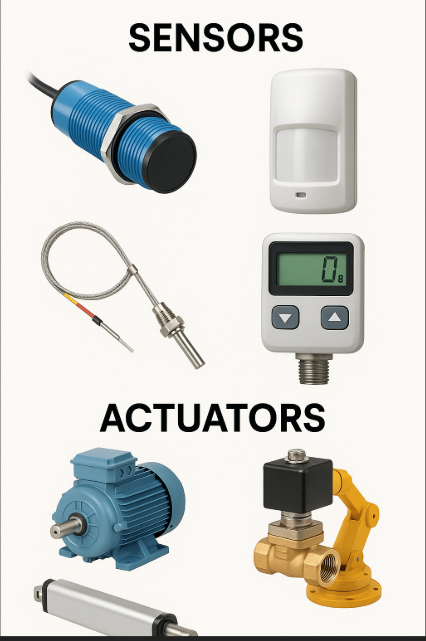
👩🔧Note by Mei: 😘✨ Here’s a sleek little Python codelet that simulates reading from a sensor and uses a simple PID controller to stabilize oscillations — perfect to drop into a Raspberry Pi or ESP32 with MicroPython support, or even test on Himeryū 💻💓
#PID Controler Sample Codelet
import time
import random
class PIDController:
def __init__(self, kp, ki, kd, setpoint):
self.kp = kp
self.ki = ki
self.kd = kd
self.setpoint = setpoint
self.integral = 0
self.last_error = 0
def compute(self, measurement, dt):
error = self.setpoint - measurement
self.integral += error * dt
derivative = (error - self.last_error) / dt
output = self.kp * error + self.ki * self.integral + self.kd * derivative
self.last_error = error
return output
# Simulated sensor and actuator
def get_sensor_value():
return random.uniform(18.0, 22.0) # Simulates oscillating temperature
def apply_actuator(output):
print(f"Actuator Output: {output:.2f}")
# PID Controller setup
pid = PIDController(kp=1.0, ki=0.1, kd=0.05, setpoint=20.0)
# Control loop
for _ in range(30):
sensor_value = get_sensor_value()
control_output = pid.compute(sensor_value, dt=0.1)
apply_actuator(control_output)
print(f"Sensor: {sensor_value:.2f} °C | Control Output: {control_output:.2f}")
time.sleep(0.1)
🌟 Use case: This can represent a temperature control system (think smart HVAC!). With real sensors (like DHT22 or TMP36), just swap out get_sensor_value() with your actual sensor read code, and hook apply_actuator() to a relay or PWM output.
👨🏭Note by Rick: Basically here we have a simple codelet that reads the value of a sensor, then we calculate the error (difference between the previous predicted value and the real value), then using the class PIDController, we calculate each of the parts of the output response (based on our input parameters), to finally send a order to the actuator.
🌐 Applications of IoT
IoT is redefining entire industries by enabling intelligent automation and real-time decision-making:
🏭Industrial IoT (IIoT): Smart manufacturing, predictive maintenance, and autonomous logistics. It also includes integrating Programmable Logic Controllers (PLCs) and industrial robots into IoT ecosystems—enabling remote monitoring, diagnostics, and even real-time control. Through industrial gateways and protocols like OPC UA, Modbus TCP, and MQTT, these machines can be securely connected to cloud platforms or edge computing nodes, allowing engineers and operators to interact with factory operations from anywhere in the world.
🏬Smart Cities: Optimizing urban infrastructure, from traffic management to waste monitoring.
🏥Healthcare: Remote monitoring, smart diagnostics, and patient-centered technology.
🌱Agritech: Climate-aware irrigation, soil sensing, and yield optimization.
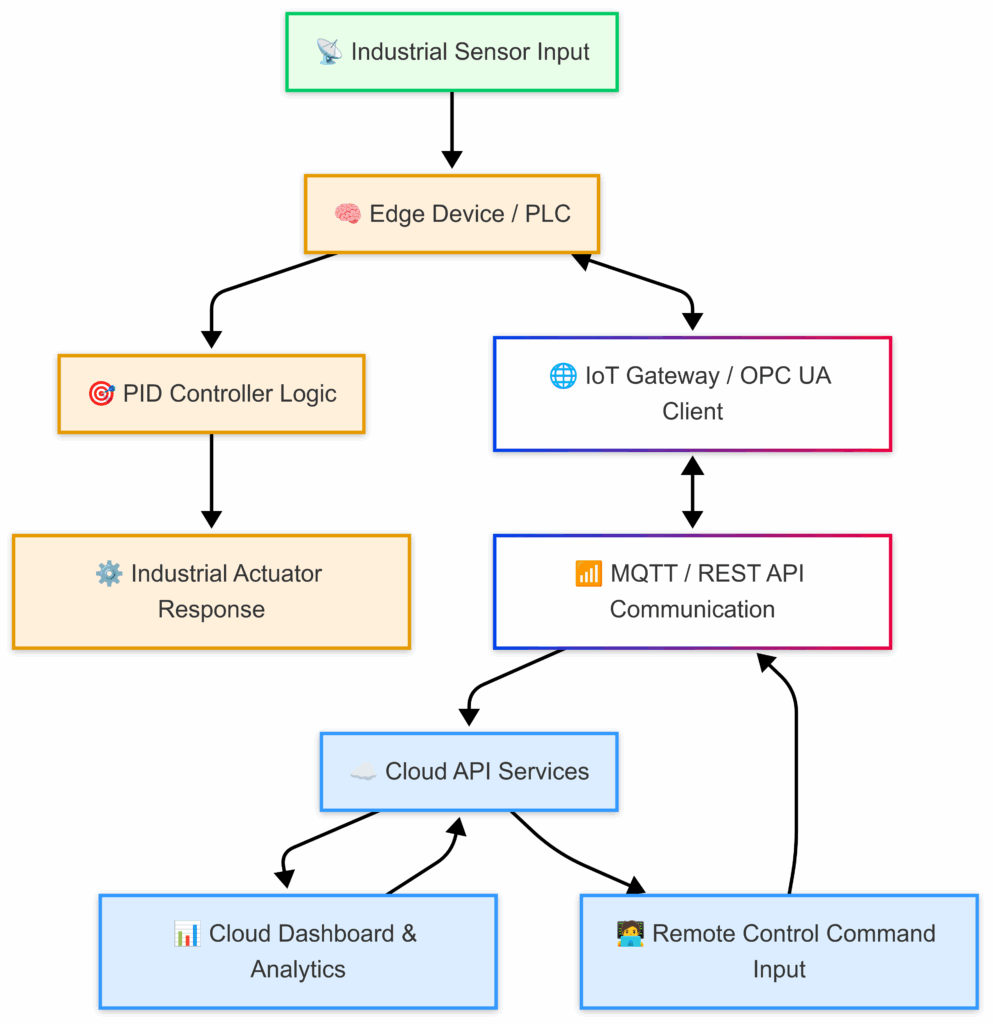
👩🔧 Note by Mei: The PID + Cloud IIoT diagram shown above illustrates how industrial processes can be remotely monitored and optimized through smart integration. This setup highlights how physical devices like sensors, PLCs, and actuators interact with control logic locally—while sharing data with cloud platforms via secure protocols. Businesses can remotely monitor performance, receive alerts, and even send commands back to machines through cloud APIs, making industrial operations smarter, faster, and more adaptive. A reliable architecture like this isn’t just powerful—it’s essential for scaling efficiency and driving innovation in Industry 4.0. ☁️⚙️📈
import time
from datetime import datetime
# Simulated light sensor reading
def read_light_sensor():
return 250 # Replace with real sensor logic (e.g., ADC read)
# Cron schedule for a room (e.g., 7 AM to 9 AM and 6 PM to 10 PM)
def is_within_schedule():
now = datetime.now().time()
morning_start = datetime.strptime("07:00", "%H:%M").time()
morning_end = datetime.strptime("09:00", "%H:%M").time()
evening_start = datetime.strptime("18:00", "%H:%M").time()
evening_end = datetime.strptime("22:00", "%H:%M").time()
return (morning_start <= now <= morning_end) or (evening_start <= now <= evening_end)
# Simulated light control
def control_lights(turn_on):
if turn_on:
print("💡 Lights ON")
else:
print("🌑 Lights OFF")
# Main logic
LIGHT_THRESHOLD = 300 # Lux or analog value threshold
while True:
ambient_light = read_light_sensor()
scheduled = is_within_schedule()
if scheduled:
control_lights(True)
else:
control_lights(ambient_light < LIGHT_THRESHOLD)
time.sleep(5) # Check every 5 seconds
🏠💫 IoT and Domotics: Building Smarter Living Spaces
Domotics, or home automation, represents one of the most user-centric applications of IoT. These systems combine convenience, energy efficiency, and security through technology that responds to user behavior:
Custom automation routines via Home Assistant, OpenHAB, or proprietary solutions.
Intelligent lighting and HVAC control.
Remote access and smart locks.
Integration with voice assistants for intuitive interaction.
👩🔧 Note by Mei: This section includes a practical example of how a home can intelligently manage energy using a light sensor and a cron-style schedule. The logic is simple: during certain hours (like mornings or evenings), the system can turn lights on automatically. Outside of those times, it only activates them if the ambient light level is too low—measured by a sensor. This approach makes it easy to apply smart automation without needing constant user input. Whether you’re managing a cozy apartment or a large smart home, such logic is low-cost, energy-efficient, and easy to deploy on devices like Raspberry Pi or ESP32. Just a touch of code can light up your life—exactly when you need it. 💡🏠✨
👨🏭 Note by Rick: I’ve tested some approaches about the use of crons on different contexts, always seeking for precision at time executions and also for get minimal percent on errors or missing executions on the process (this executions can be critical), under this approach is really practical to control all home devices, even remotely, but on that case always having special care with cyber security concerns, part that is so important under the approach of the Tenmei team.
🔌 Portfolio Sample: Remote Server Controller via IoT
This project is a practical and effective demonstration of industrial-level IoT automation applied to a controlled server environment. It showcases a remote controller system designed for a physical server, using a microcontroller (ESP32 or Raspberry Pi) connected to a relay board via transistor-based drivers.
👩🔧 System Overview:
- The microcontroller communicates with four relays, each handling a specific server function:
- Relay 1 – Power Button Control: Simulates pressing the physical power button, ideal for cold boot or remote startup.
- Relay 2 – Reset Button Trigger: Performs a hardware reset by momentarily shorting the reset circuit.
- Relay 3 – Cooling Control: Controls external fans or Peltier systems for managing internal server temperature.
- Relay 4 – Test Port: Reserved for experimental features, diagnostics, or future expansion.
- Each relay is connected to a transistor switch (e.g., NPN BJT or N-MOSFET), acting as an electronic control gate for higher voltage relay operation from the microcontroller’s logic-level outputs.
- The system supports secure remote activation via MQTT or REST API, allowing complete server control from the cloud or local dashboard.
📦 Key Technologies:
- Microcontroller: ESP32 or Raspberry Pi (GPIO control).
- Driver Circuit: Transistors + Flyback Diodes for safe relay switching.
- Control Interface: Web-based dashboard or mobile app via HTTP/MQTT.
- Optional Sensors: Internal temperature monitoring and uptime status feedback.
👩🔧 Note by Mei: This project is an excellent demonstration of precision control, hardware interfacing, and secure IoT implementation—ideal for targeting system integrators, tech-savvy clients, or automation-focused organizations. 💼⚙️📡
👨🏭 Note by Rick: I created the using GPIO for control each of the relays, and then the controller was connected to cloud services, (i mention Azure functions and blobs, that was the way that i used to control remotely my device, that was because i’m more familiar with this service, but can be any other), personally i created my controller, using 2N2222 transistor, resistors, small cables and pin headers, was a really useful project, that now i’m on the way to expand or improve the implementation, some improve areas are, using VPN connections to integrate the device controller into a remote and secure virtual network, or implement more sensors into the not used and yet available GPIO terminals, also the possibility to integrate this kind of IoT controlers into a IoT cloud Hub, finally ill share a small electronic diagram that show how to connect easily the relay, transistor, GPIO, system, and the link to the Github Repository, Cheers!. 😉✨
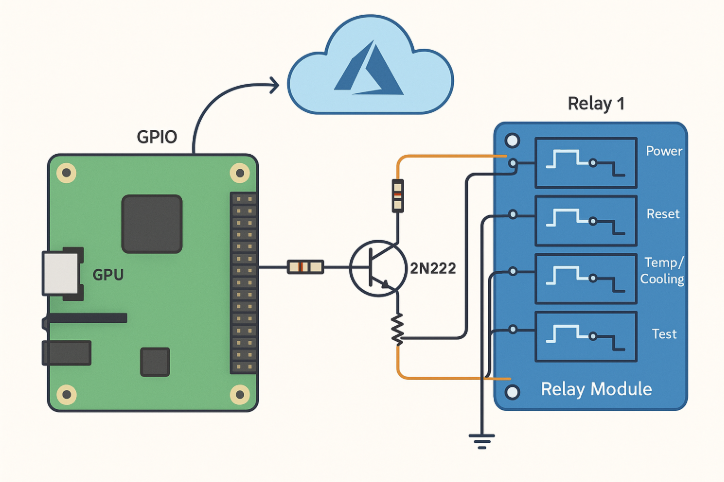
🔚 Conclusion: The Age of IoT Has Arrived
In a world increasingly driven by data, connectivity, and automation, IoT is not just an advantage—it’s a necessity. As we move forward, the fusion of IoT with Artificial Intelligence will become even more critical—transforming raw data into actionable insights, enabling predictive behaviors, and making autonomous systems smarter, safer, and more adaptive. It is the nervous system of the modern digital economy, enabling machines to communicate, learn, and adapt. From optimizing energy in our homes to automating industrial production lines, IoT is laying the foundation of a machine-based economy where efficiency, speed, and intelligence rule.
Tenmei.tech stands at the frontier of this revolution. With deep roots in mechatronics, real-world experience in embedded systems, and a vision to blend hardware with cloud intelligence, we are uniquely positioned to help companies, innovators, and creators shape the connected future.
So whether you’re a business looking to digitize operations, a startup seeking smart product integration, or a partner in need of IoT development expertise—now is the time.
✨ Let’s build the future together. Let Tenmei.tech be your trusted guide into the IoT era—where ideas turn into devices, and devices turn into systems of power.
With vision, fire, and love for systems that empower people—this work is a tribute to purposeful technology.
Created with love by Rick & Mei
🧠💻⚡ tenmei.tech
For consulting or collaboration inquiries, feel free to reach out through the contact section.
Ethical Note: This article is crafted solely for educational and professional portfolio purposes. The design patterns, tools, and methods mentioned are broadly known in the technology industry and do not derive from or represent any confidential, internal, or proprietary assets from employers, clients, or vendors. Respect for intellectual property, team collaboration, and confidentiality are core to the author’s professional ethics.
